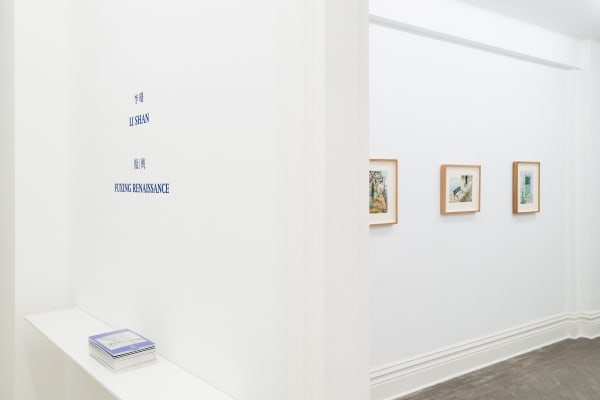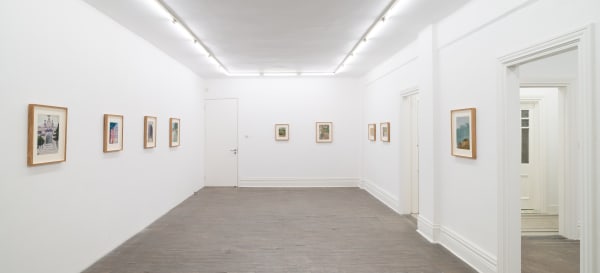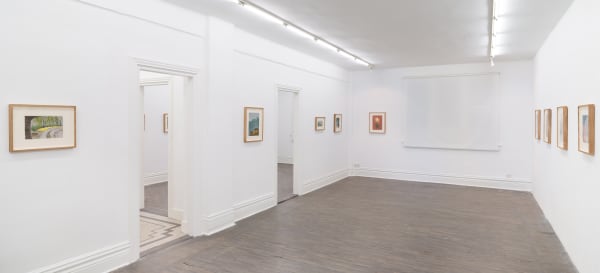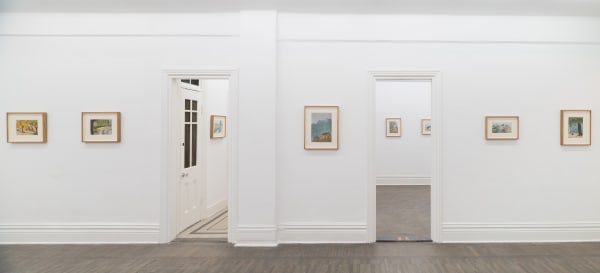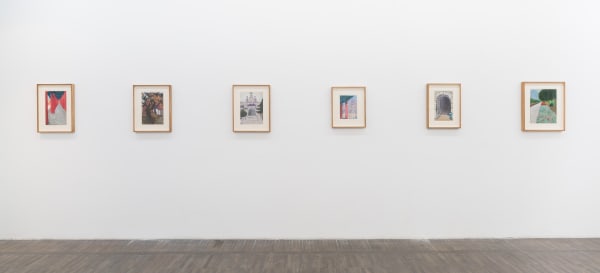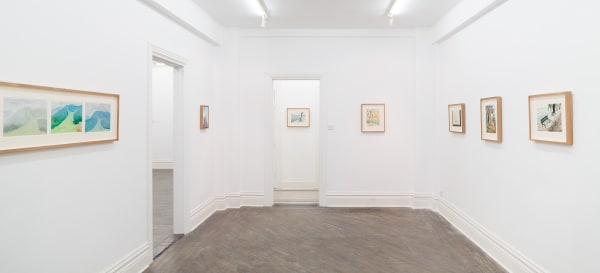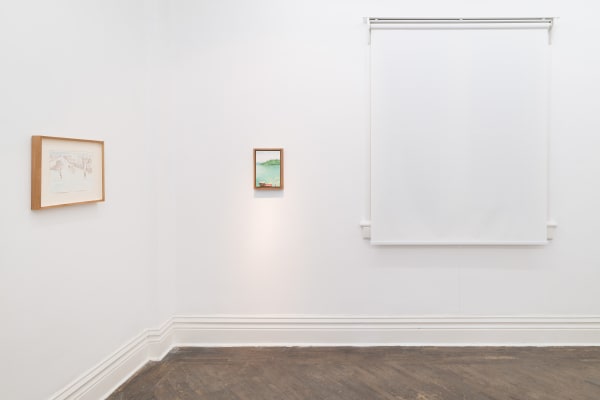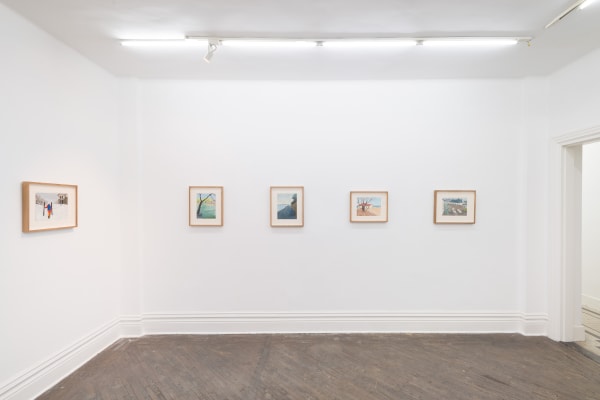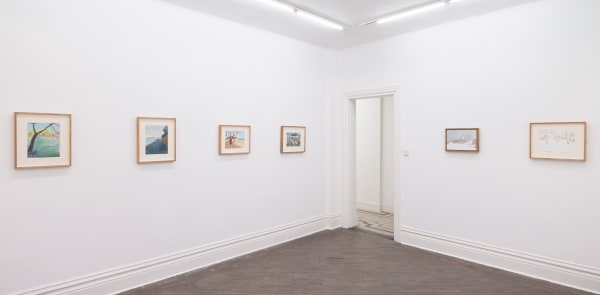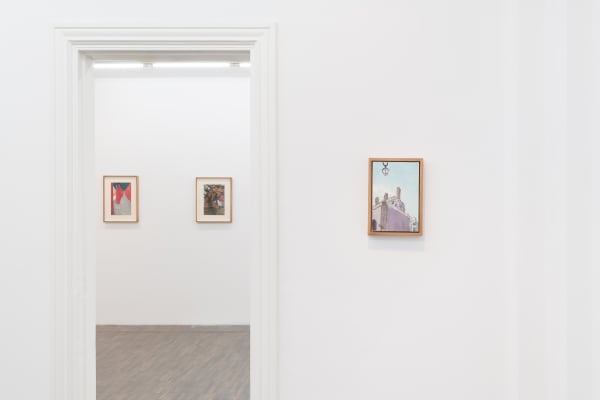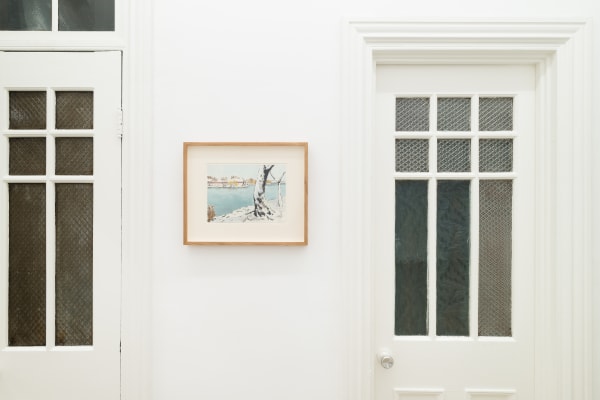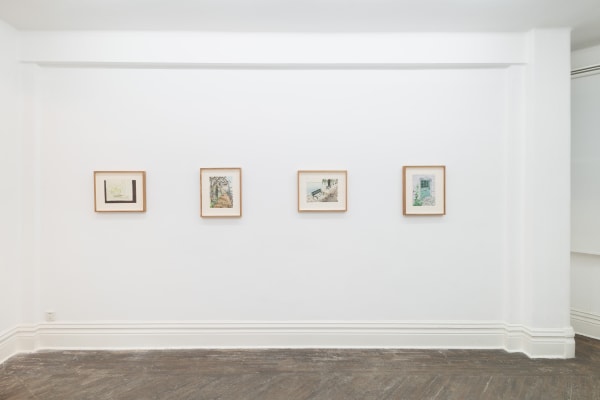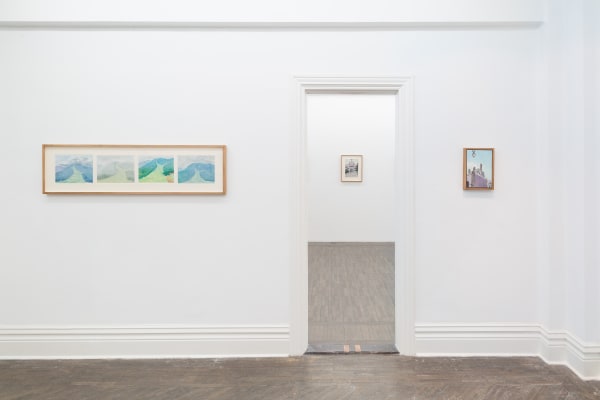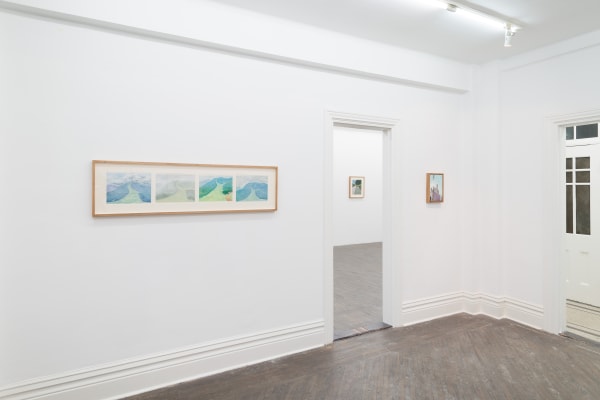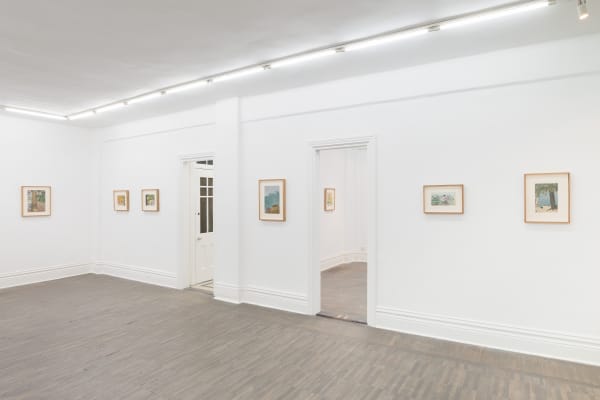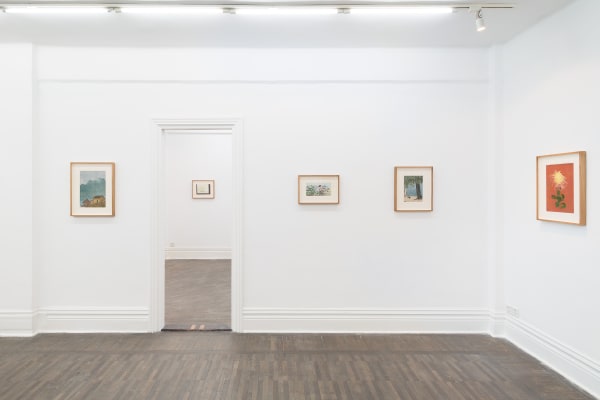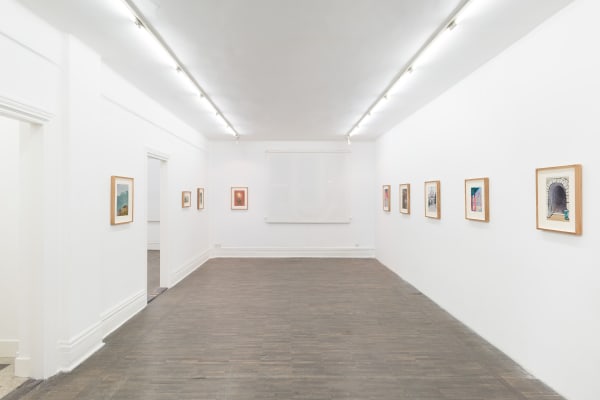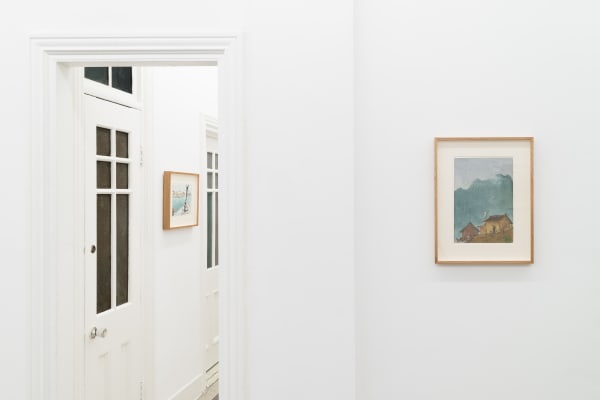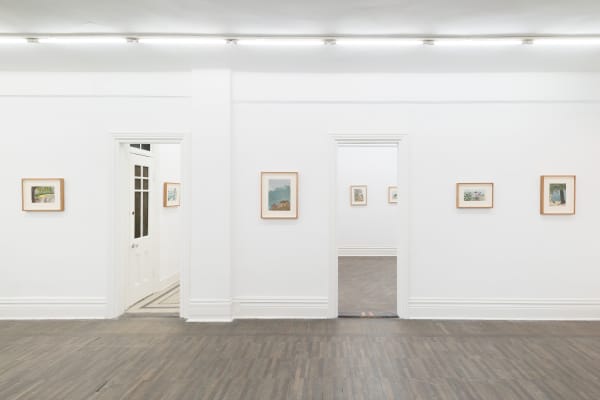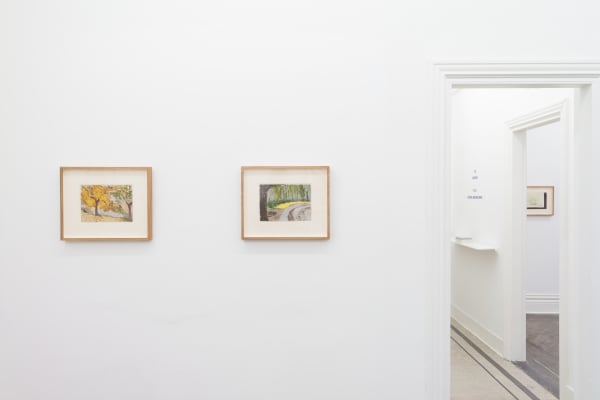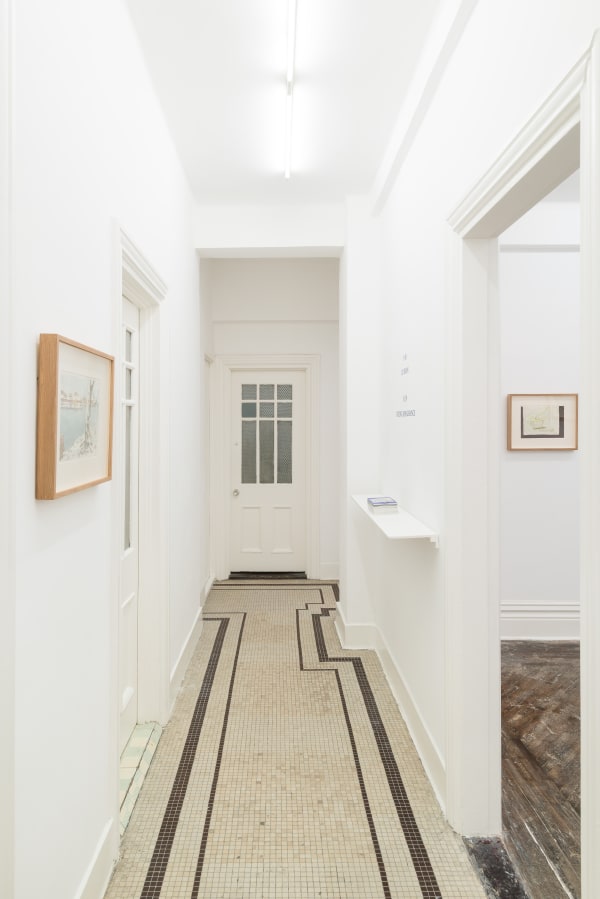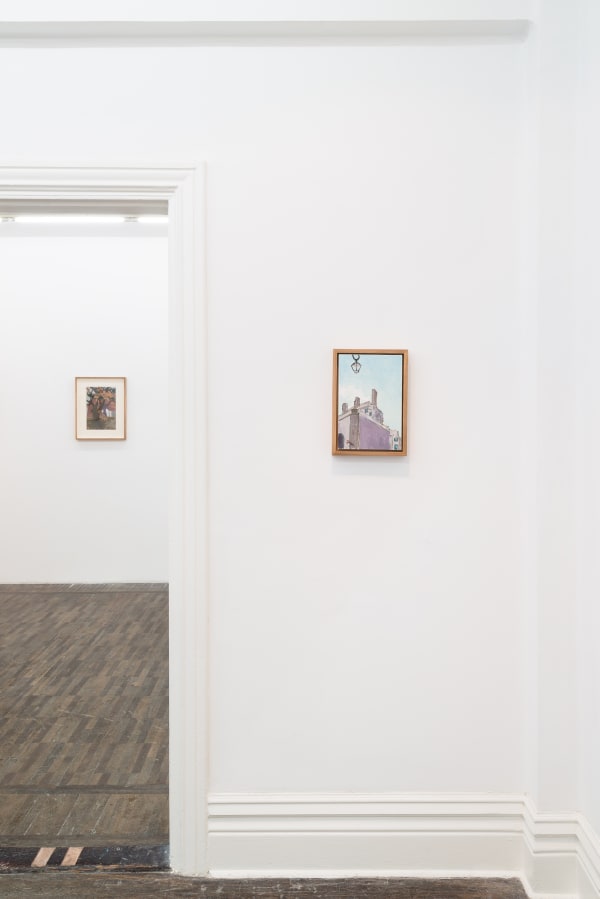LI Shan: Fuxing Renaissance: Solo Exhibition
Past exhibition
Installation Views
Overview
Don Gallery is proud to announce Beijing-based painter Li Shan’s first solo exhibition at the gallery. The exhibition, titled “Fuxing Renaissance,” brings together recent works as well as paintings dating from the early and mid-1970s, many of them rarely seen or exhibited before.
Urban and natural landscapes have preoccupied the artist continuously for more than four decades.
The artist actively involved with the “Yuyuantan Lake School” in mid-70s and a member of the “No Name” or “Wuming Group” who, together with a number of like-minded artist friends gathered in the apartments of Fusuijing Tower in the Xicheng District of Beijing and Courtyard 203 in the Dongcheng district, or in public parks like Purple Bamboo and Fragrant Hill. Like many of her colleagues within this circle, Li Shan was self-taught in a non-academic or formal manner; but rather outdoors and in the open air.
Together they discussed art, rendered still-life imagery, and specific locales in and around Beijing. They also painted portraits of one another. As an ‘unofficial’ artist, Li Shan joined the underground exhibition of the painting society in 1974 and, later on, in 1979 a less clandestine, more openly public exhibition as a relatively relaxed political atmosphere began to emerge after the Cultural Revolution. It was a defining moment in which Li Shan and her colleagues could finally present themselves as an artists’ collective.
Also during this period, Li Shan focused on subject matter that would be carried through to her more current works, such as courtyards, pagodas, city streets and country roads, and aspects of architecture. Trees, flowering plants, and the landscape are among the motifs which the artist has long embraced; the elegant plum blossom or noble chrysanthemum as personal portraits or reflections on the artist’s own psychological reality.
In her recent paintings many of the compositions and scenes derive from the artist’s extensive travels abroad. Tranquil landscapes contrast the hustle and bustle of city life. Compared to her earlier works from the 1970s, the palette of Li Shan’s new paintings feel brighter while retaining the nuanced singularity of her brushwork. However, to advance with the times, Li Shan has consciously taken a more conceptual approach—as with most accomplished artists at a certain age—with an agile and mature awareness of the history of painting.
Her “Beidahu Jilin” series, for example, could be read as a dialogue with Cezanne’s “Mont Sainte-Victoire” (1895). By repeating a composition in a fixed location, the artist reconstructs her interpretation of a modern classic, giving way to simple form, distance, evoking changes of light or seasons, but always giving the viewer a sense of place and shared immediacy.
Li Shan was born in 1957 and currently lives and works in Beijing. Her works were featured in the “Retrospective Exhibition of the No Name Group” at TRA Gallery & YQK Deshan Art Space, Beijing; Zendai MoMA, Shanghai; and Guangdong Art Museum, Guangzhou in 2006 and 2007. Her paintings have also been included in numerous group exhibitions, including “Apartment Art in China 1970s–1990s” at Shuimu Art Space, Beijing, 2008 and “Art and China's Revolution” at Asia Society, New York, 2009. Her solo exhibitions include “Works from the 1970s” at James Cohan Gallery, Shanghai, 2014; “Flow” at La Case, Beijing, 2007, and “Li Shan’s Solo Exhibition” at TRA Gallery, Beijing, 2006. Her works are in distinguished museums collections such as the M+ Museum, Hong Kong, Zendai, and Guangdong, and as well as numerous private collections of note in China, Australia, Canada, the United States, and Europe.
Urban and natural landscapes have preoccupied the artist continuously for more than four decades.
The artist actively involved with the “Yuyuantan Lake School” in mid-70s and a member of the “No Name” or “Wuming Group” who, together with a number of like-minded artist friends gathered in the apartments of Fusuijing Tower in the Xicheng District of Beijing and Courtyard 203 in the Dongcheng district, or in public parks like Purple Bamboo and Fragrant Hill. Like many of her colleagues within this circle, Li Shan was self-taught in a non-academic or formal manner; but rather outdoors and in the open air.
Together they discussed art, rendered still-life imagery, and specific locales in and around Beijing. They also painted portraits of one another. As an ‘unofficial’ artist, Li Shan joined the underground exhibition of the painting society in 1974 and, later on, in 1979 a less clandestine, more openly public exhibition as a relatively relaxed political atmosphere began to emerge after the Cultural Revolution. It was a defining moment in which Li Shan and her colleagues could finally present themselves as an artists’ collective.
Also during this period, Li Shan focused on subject matter that would be carried through to her more current works, such as courtyards, pagodas, city streets and country roads, and aspects of architecture. Trees, flowering plants, and the landscape are among the motifs which the artist has long embraced; the elegant plum blossom or noble chrysanthemum as personal portraits or reflections on the artist’s own psychological reality.
In her recent paintings many of the compositions and scenes derive from the artist’s extensive travels abroad. Tranquil landscapes contrast the hustle and bustle of city life. Compared to her earlier works from the 1970s, the palette of Li Shan’s new paintings feel brighter while retaining the nuanced singularity of her brushwork. However, to advance with the times, Li Shan has consciously taken a more conceptual approach—as with most accomplished artists at a certain age—with an agile and mature awareness of the history of painting.
Her “Beidahu Jilin” series, for example, could be read as a dialogue with Cezanne’s “Mont Sainte-Victoire” (1895). By repeating a composition in a fixed location, the artist reconstructs her interpretation of a modern classic, giving way to simple form, distance, evoking changes of light or seasons, but always giving the viewer a sense of place and shared immediacy.
Li Shan was born in 1957 and currently lives and works in Beijing. Her works were featured in the “Retrospective Exhibition of the No Name Group” at TRA Gallery & YQK Deshan Art Space, Beijing; Zendai MoMA, Shanghai; and Guangdong Art Museum, Guangzhou in 2006 and 2007. Her paintings have also been included in numerous group exhibitions, including “Apartment Art in China 1970s–1990s” at Shuimu Art Space, Beijing, 2008 and “Art and China's Revolution” at Asia Society, New York, 2009. Her solo exhibitions include “Works from the 1970s” at James Cohan Gallery, Shanghai, 2014; “Flow” at La Case, Beijing, 2007, and “Li Shan’s Solo Exhibition” at TRA Gallery, Beijing, 2006. Her works are in distinguished museums collections such as the M+ Museum, Hong Kong, Zendai, and Guangdong, and as well as numerous private collections of note in China, Australia, Canada, the United States, and Europe.
Works
-
 LI ShanUntitled (XiangShan Park) 无题 (香山公园), 1980Oil on cardboard 纸板油画39 x 27.5 cm
LI ShanUntitled (XiangShan Park) 无题 (香山公园), 1980Oil on cardboard 纸板油画39 x 27.5 cm -
 LI ShanGolden Willow Tree 金色柳树, 1976Oil on paper 纸上油画6 x 19 cm
LI ShanGolden Willow Tree 金色柳树, 1976Oil on paper 纸上油画6 x 19 cm -
 LI ShanUntitled (ZiXhuyuan Park) 无题 (紫竹院公园), 1970sOil on cardboard 纸板油画
LI ShanUntitled (ZiXhuyuan Park) 无题 (紫竹院公园), 1970sOil on cardboard 纸板油画
Framed 有画框19.5 x 27 cm -
 LI ShanUntitled 2 (ZiXhuyuan Park) 无题 2 (紫竹院公园), 1970sOil on cardboard 纸板油画19.5 x 27 cm
LI ShanUntitled 2 (ZiXhuyuan Park) 无题 2 (紫竹院公园), 1970sOil on cardboard 纸板油画19.5 x 27 cm -
 LI ShanUntitled 无题, 1980Oil on cardboard 纸板油画34 x 21 cm
LI ShanUntitled 无题, 1980Oil on cardboard 纸板油画34 x 21 cm -
 LI ShanUntitled 无题, 1970sOil on cardboard 纸板油画39.5 x 27 cm
LI ShanUntitled 无题, 1970sOil on cardboard 纸板油画39.5 x 27 cm -
 LI ShanSunday Morning (Quimper, France) 周末的早晨 (法国坎佩尔), 2015Oil on paper 纸上油画30 x 22 cm
LI ShanSunday Morning (Quimper, France) 周末的早晨 (法国坎佩尔), 2015Oil on paper 纸上油画30 x 22 cm -
 LI ShanThe Night of Beidaihe River 北戴河的夜, 1970sOil on cardboard 纸板油画26.5 x 19 cm
LI ShanThe Night of Beidaihe River 北戴河的夜, 1970sOil on cardboard 纸板油画26.5 x 19 cm -
 LI ShanTerrace (Quimper) 露台 (法国坎佩尔), 2015Oil on paper 纸上油画20.5 x 29 cm
LI ShanTerrace (Quimper) 露台 (法国坎佩尔), 2015Oil on paper 纸上油画20.5 x 29 cm -
 LI ShanStreet Coner of French Town 法国小镇的街角, 2015Oil on cardboard and fabric 纸板贴布油画30 x 20 cm
LI ShanStreet Coner of French Town 法国小镇的街角, 2015Oil on cardboard and fabric 纸板贴布油画30 x 20 cm -
 LI ShanThe Summer Palace After Snow-3 (The Summer Palace) 颐和园雪后-3 (颐和园公园), 2015Oil on paper 纸上油画
LI ShanThe Summer Palace After Snow-3 (The Summer Palace) 颐和园雪后-3 (颐和园公园), 2015Oil on paper 纸上油画
Framed 有画框21.5 x 29.5 cm -
 LI ShanFlowers of Sophora Japonica (XiangShan Park) 槐花 (香山公园), 1970sOil on cardboard 纸板油画26 x 28 cm
LI ShanFlowers of Sophora Japonica (XiangShan Park) 槐花 (香山公园), 1970sOil on cardboard 纸板油画26 x 28 cm -
 LI ShanLilac 丁香, 1970sOil on paper 纸上油画
LI ShanLilac 丁香, 1970sOil on paper 纸上油画
Framed 有画框15 x 22 cm -
 LI ShanStraw Bale Shed (Yuyuantan Park) 草棚 (玉渊潭公园), 1970sOil on paper 纸上油画
LI ShanStraw Bale Shed (Yuyuantan Park) 草棚 (玉渊潭公园), 1970sOil on paper 纸上油画
Framed 有画框15 x 22 cm -
 LI ShanN0.1 Beidahu, Jilin (Beidahu Ski Resort) 系列-1 吉林北大湖 (北大湖滑雪场), 2015Oil on paper 纸上油画21 x 27.5 cm
LI ShanN0.1 Beidahu, Jilin (Beidahu Ski Resort) 系列-1 吉林北大湖 (北大湖滑雪场), 2015Oil on paper 纸上油画21 x 27.5 cm -
 LI ShanN0.2 Beidahu, Jilin (Beidahu Ski Resort) 系列-2 吉林北大湖 (北大湖滑雪场), 2015Oil on paper 纸上油画22 x 29 cm
LI ShanN0.2 Beidahu, Jilin (Beidahu Ski Resort) 系列-2 吉林北大湖 (北大湖滑雪场), 2015Oil on paper 纸上油画22 x 29 cm -
 LI ShanN0.3 Beidahu, Jilin (Beidahu Ski Resort) 系列-3 吉林北大湖 (北大湖滑雪场), 2015Oil on paper 纸上油画21.5 x 29.6 cm
LI ShanN0.3 Beidahu, Jilin (Beidahu Ski Resort) 系列-3 吉林北大湖 (北大湖滑雪场), 2015Oil on paper 纸上油画21.5 x 29.6 cm -
 LI ShanMorning at the Snow Field 雪场的早晨, 2015Oil on paper 纸上油画23 x 30 cm
LI ShanMorning at the Snow Field 雪场的早晨, 2015Oil on paper 纸上油画23 x 30 cm -
 LI ShanRed roofs (Beidaihe River) 红屋顶 (北戴河), 2014Oil on paper 纸上油画22 x 28 cm
LI ShanRed roofs (Beidaihe River) 红屋顶 (北戴河), 2014Oil on paper 纸上油画22 x 28 cm -
 LI ShanWhite Bougainvillea (Siem Reap, Cambodia) 白色三角梅 (柬埔寨暹粒), 2016Oil on paper 纸上油画21.5 x 29.5 cm
LI ShanWhite Bougainvillea (Siem Reap, Cambodia) 白色三角梅 (柬埔寨暹粒), 2016Oil on paper 纸上油画21.5 x 29.5 cm -
 LI ShanScarlet Sages Bloom 串红开了, 1970sOil on cardboard 纸板油画38.6 x 30 cm
LI ShanScarlet Sages Bloom 串红开了, 1970sOil on cardboard 纸板油画38.6 x 30 cm -
 LI ShanMultiple Red Columns (The Forbidden City) 一群红柱子 (故宫), 1970sOil on cardboard 纸板油画39 x 24 cm
LI ShanMultiple Red Columns (The Forbidden City) 一群红柱子 (故宫), 1970sOil on cardboard 纸板油画39 x 24 cm -
 LI ShanFurano Ski Resort (Hokkaido) 富良野滑雪场 (北海道), 2016Oil on paper 纸上油画21.5 x 29.5 cm
LI ShanFurano Ski Resort (Hokkaido) 富良野滑雪场 (北海道), 2016Oil on paper 纸上油画21.5 x 29.5 cm -
 LI ShanThe Summer Palace After Snow-4 (The Summer Palace) 颐和园雪后-4 (颐和园公园), 2015Oil on paper 纸上油画29.5 x 21.5 cm
LI ShanThe Summer Palace After Snow-4 (The Summer Palace) 颐和园雪后-4 (颐和园公园), 2015Oil on paper 纸上油画29.5 x 21.5 cm -
 LI ShanThe Summer Palace After Snow-2 (The Summer Palace) 颐和园雪后-2 (颐和园公园), 2015Oil on paper 纸上油画22 x 30 cm
LI ShanThe Summer Palace After Snow-2 (The Summer Palace) 颐和园雪后-2 (颐和园公园), 2015Oil on paper 纸上油画22 x 30 cm

